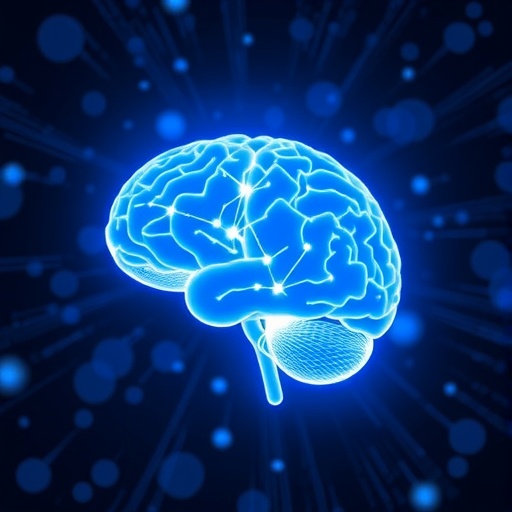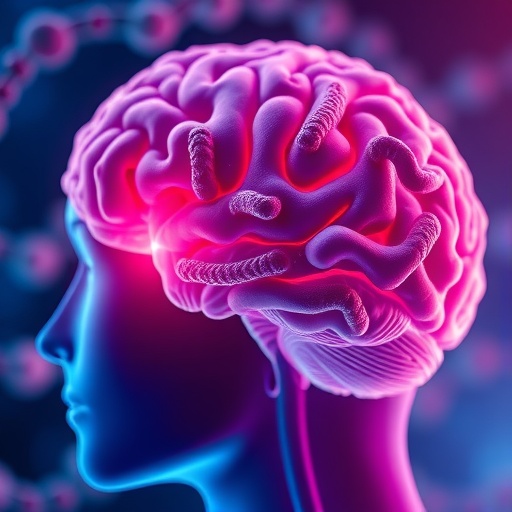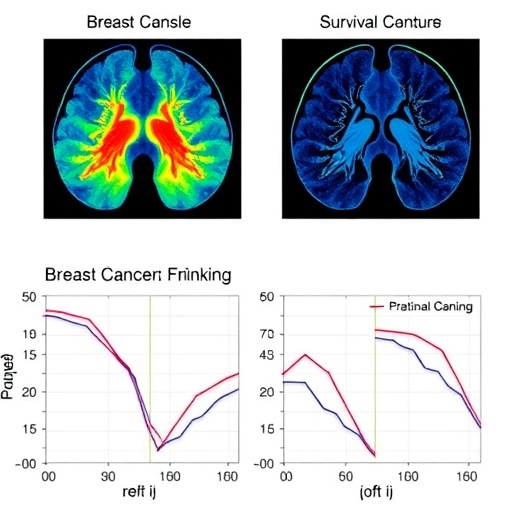In a groundbreaking development poised to reshape the landscape of neurodegenerative disease research, a recent report has unveiled the first comprehensive registry for Parkinson’s disease patients in Iran. This registry stands as a pivotal resource, marking a significant stride forward in understanding the intricate epidemiology and clinical variability of Parkinson’s disease (PD) in a Middle Eastern population. Parkinson’s disease, characterized by its hallmark motor symptoms including bradykinesia, rigidity, and resting tremor, affects millions globally, yet the regional nuances of its manifestation, progression, and response to treatment have remained underexplored in certain populations—especially within developing countries. The establishment of this registry is not only a vital epidemiological milestone but also an invaluable foundation upon which future translational research and therapeutic strategies can be built tailored to the Iranian demographic.
The Iranian Parkinson’s disease registry, as detailed by Salari and colleagues in their comprehensive 2025 report published in npj Parkinson’s Disease, encapsulates data collected over several years from multiple clinical centers across Iran. Crucially, such an initiative transcends mere data accumulation—it brings a multidisciplinary approach involving neurologists, epidemiologists, geneticists, and healthcare policymakers united with a single vision. Their ambition is bold yet clear: to assemble an exhaustive dataset that captures not only clinical phenotypes but also ancillary variables such as genetic predispositions, environmental exposures, treatment responses, and comorbid conditions. This systematic aggregation of data is anticipated to uncover hitherto unrecognized patterns in disease onset, progression trajectories, and therapeutic outcomes distinct to the Iranian population.
Central to the registry’s design is the inclusion of both idiopathic cases—where the disease arises sporadically—and familial Parkinson’s disease phenotypes. Earlier studies have suggested that genetic factors in PD exhibit ethnic and geographic variability, with mutations in genes like LRRK2 and PARK2 showing varying prevalence worldwide. By integrating detailed genotyping within the registry framework, researchers aim to delineate genetic variants’ influence on disease susceptibility and phenotype variability in Iran’s ethnically diverse population. This could notably align with global efforts to stratify PD subtypes based on their molecular and clinical underpinnings, a critical venture that ultimately underlies precision medicine approaches.
.adsslot_zh5Zpyv1et{ width:728px !important; height:90px !important; }
@media (max-width:1199px) { .adsslot_zh5Zpyv1et{ width:468px !important; height:60px !important; } }
@media (max-width:767px) { .adsslot_zh5Zpyv1et{ width:320px !important; height:50px !important; } }
ADVERTISEMENT
Beyond genetics, the Iranian registry emphasizes a multidimensional characterization of patients, including neuroimaging diagnostics, cognitive assessments, and quality of life indexes. Parkinson’s disease, though classically defined by motor symptoms, increasingly reveals a complex non-motor symptomatology such as autonomic dysfunction, sleep disturbances, and neuropsychiatric syndromes—features often underreported or underestimated. The registry’s incorporation of standardized scales for comprehensive symptom evaluation, alongside longitudinal follow-up, enriches its utility in understanding disease heterogeneity and natural history in a real-world clinical setting. This granularity is invaluable for recognizing disease subtypes with prognostic significance.
The influence of environmental factors on Parkinson’s disease pathogenesis has long intrigued scientists, yet regional differences in environmental risk exposures are poorly characterized globally. Iran’s unique environmental landscape, including varying degrees of air pollution, pesticide use, and industrial exposures, offers a distinct milieu in which to study environmental risk factors’ role. The registry collects detailed patient histories encompassing occupational and residential exposures, lifestyle habits, and dietary information. This integrative approach enhances epidemiological insight and may identify modifiable risk factors amenable to public health interventions, potentially curbing PD incidence or mitigating progression pace.
A notable feature of the registry is its dynamic nature—it is not a stagnant database but one designed for continuous updating and expansion. This enables real-time analytics and robust longitudinal studies, tracking disease progression, and therapeutic efficacy over time. Treatment-related data include pharmacologic regimens, response profiles, autoimmunity assessments, and adverse effects documentation. Such data are critical for elucidating treatment heterogeneity and optimizing individualized patient management strategies, a cornerstone in neurologic therapeutics today. The registry’s longitudinal framework also facilitates clinical trial readiness, allowing rapid identification and recruitment of appropriate patient cohorts.
Irrespective of its epidemiological import, the registry serves as a powerful infrastructure platform for collaborative research initiatives. By uniting multiple medical centers and research institutions under a coordinated database, it fosters synergy and data sharing rarely achieved in the region. This collaborative matrix empowers Iranian researchers to participate on equal footing in global PD consortia and meta-analyses, bridging gaps in representation and enriching multinational datasets with robust, region-specific evidence. This integration holds promise for enhancing the generalizability and applicability of emerging PD therapeutics and biomarker discoveries.
The establishment of the Iranian Parkinson’s disease registry also addresses critical healthcare system challenges, including the lack of centralized patient data and inconsistent follow-up protocols. By standardizing diagnostic criteria, clinical assessments, and data entry protocols across centers, the registry elevates the quality of care delivered to PD patients nationwide. This harmonization not only enables comparative effectiveness research but also equips healthcare providers with actionable data, fostering patient-centered care models that respond pragmatically to evolving patient needs.
Another compelling aspect is the registry’s commitment to leveraging cutting-edge technology. Data collection employs secure digital platforms compatible with electronic health records (EHRs), enabling seamless integration and safeguarding patient privacy with robust encryption and compliance with ethical standards. Such configurations facilitate rapid data retrieval for research and clinical decision-making. Moreover, the application of machine learning algorithms upon these rich datasets is envisioned, potentially enabling predictive modeling of disease trajectories and treatment responses, advancing personalized neurology.
The registry is particularly germane given Parkinson’s disease’s status as a rapidly growing public health concern worldwide. As populations age, the prevalence of PD escalates, burdening health systems both in terms of resource allocation and patient support services. Iran, with its unique demographic and socio-economic profile, stands to gain significantly from localized data informing public health policy and resource deployment. The registry provides policymakers with evidence-based insights, enabling prioritization of research funding, healthcare infrastructure enhancement, and community education focused on early detection and management.
Importantly, the report highlights the challenges encountered during the registry’s development, including logistical complexities, heterogeneous healthcare delivery systems across regions, and patient recruitment barriers. These obstacles, while formidable, were methodically addressed through strategic planning, stakeholder engagement, and iterative refinement of data collection tools. The success of such an initiative in a country with diverse geographic and socio-cultural characteristics epitomizes the feasibility of large-scale registries in resource-variable settings, potentially serving as a model for similar endeavors globally.
The protracted follow-up of patients included in the registry will yield invaluable insights into Parkinson’s disease natural history within an Iranian context, especially regarding disease progression markers, survival rates, and comorbidity profiles. Availability of such data is critical to refining clinical prognostic models and tailoring interventions to maximize functional outcomes and quality of life. Moreover, the data enable comparative epidemiology between countries, potentially disentangling universal versus region-specific disease determinants.
In addition, the Iranian Parkinson’s disease registry proves fertile ground for hypothesis generation and validation in the realm of neurodegenerative research. Understanding how genetic, environmental, and clinical factors converge to sculpt the Parkinsonian phenotype shapes future experimental designs. For example, novel biomarkers identified in this population may pave the way for earlier diagnoses or distinguish PD from related parkinsonian syndromes with greater accuracy, addressing a critical unmet clinical need.
Collectively, the establishment and detailed report of the Iranian Parkinson’s disease registry embody a remarkable milestone in neurodegenerative disease research and patient care. It encapsulates a comprehensive approach to capturing the multifactorial nature of Parkinson’s disease within a specific population, blending clinical precision with technological innovation and collaborative spirit. The scientific community undoubtedly will benefit from this repository, which promises to illuminate pathways toward tailored therapeutics and improved prognostication in Parkinson’s disease globally.
By bridging gaps in regional Parkinson’s disease data and fostering an integrated research culture, the Iranian registry lays the groundwork for transformative advances in understanding and combating this debilitating condition. As this dataset matures, it will enable not only national improvements in care but also enrich the global narrative of Parkinson’s disease, contributing to the ultimate goal of conquering this relentless neurological disorder.
Subject of Research: Iranian Parkinson’s disease registry; epidemiology, clinical characterization, genetics, and environmental factors in Parkinson’s disease patients in Iran.
Article Title: A report of the Iranian Parkinson’s disease registry.
Article References:
Salari, M., Etemadifar, M., Vakilian, A. et al. A report of the Iranian Parkinson’s disease registry. npj Parkinsons Dis. 11, 251 (2025). https://doi.org/10.1038/s41531-025-01108-7
Image Credits: AI Generated
Tags: bradykinesia and motor symptomsclinical variability in Parkinson’scomprehensive health data collectionepidemiology of Parkinson’s diseasehealthcare policy and Parkinson’s diseaseIran Parkinson’s disease registryMiddle Eastern Parkinson’s patientsmultidisciplinary approach in healthcareNeurodegenerative disease researchParkinson’s disease in developing countriesParkinson’s disease treatment responsetranslational research in neurodegeneration





